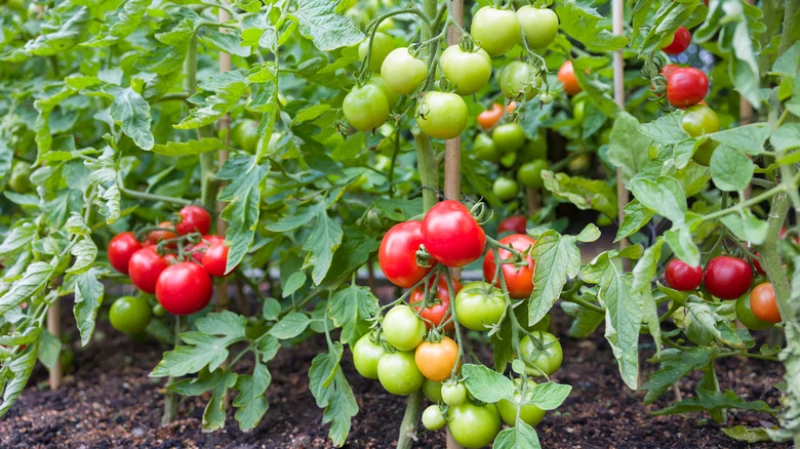Tomato plants thrive with leaf mold

Tomatoes are the shining stars of many backyard gardens. Whether you prefer small, burst-in-your-mouth tomatoes or large juicy ones perfect for burgers, growing healthy tomatoes can make all the difference in your gardening experience. Since tomatoes are not native to most backyard environments and originated in the Andes, it's crucial to amend the soil to create an ideal growing environment for them. One excellent way to provide your tomatoes with essential nutrients is by using leaf mold, a treasure trove of rich organic matter.
Creating leaf mold is a cost-effective method, especially if you have access to deciduous trees. While it requires some patience as you allow nature to take its course, setting up multiple leaf piles can ensure a constant supply of nutrient-rich compost to nourish your tomato plants. Moreover, leaf mold benefits not only tomatoes but also a wide range of other plants in your garden.
What is it about leaf mold that makes tomato plants so happy? For starters, leaf mold is full of nutrients from the leaves it was made from. It helps bring new life to tired old soils. Tomatoes like plenty of phosphorus, and since leaf mold creates a build-up of phosphorus, the two go hand-in-hand. The tomatoes will feed off of the build-up and prevent the soil from holding too much, creating balance. Since tomatoes are hungry plants that will soak up all the nutrients, you'll need to fertilize with leaf mold and other nutrient sources about three times throughout the growing season. Prep your soil with a generous amount at the start of the season and then again once or twice more as the plants grow.
Since leaf mold is made through a much slower process than typical compost, beneficial fungi are able to thrive better, which helps out tomato plants and the soil. High microbial content in the soil, which includes the presence of fungi, results in healthier plants that are more capable of fighting off diseases. A study in the Urban Agriculture & Regional Food Systems journal found that the use of leaf mold in soil significantly increased tomato plant growth and overall health.
Turn fallen leaves into garden gold
Making leaves into something usable in the garden is easy, but it will require patience. You likely won't get to use your first batch for up to three years, so it's wise to start a new pile each year until you can use the first pile. Then, you can refill the first pile after using it and keep the process going for years to come. Though it takes time, it's an easy way to dispose of dead leaves and turn them into something useful in the garden. Even if you live in an urban area with few trees, you can collect leaves wherever you find them, provided they're not contaminated with pollution or chemicals.
Round up the fallen leaves and gather them together in a designated spot. Give them a good soak with water. You can store them in a garbage bag, compost bin, or in a secure pile shielded from the breeze. If your area is prone to strong winds, consider using a method that will prevent the leaves from scattering, such as placing a board on top of them. Unlike traditional compost, leaf mold doesn't require frequent turning; simply give it a stir once a year. If the leaves start to dry out, moisten them again. However, if you position them in an open area that receives natural moisture from snow and rain, you may not need to do this step. After a couple of years, your leaf mold will be fully developed and ready for use. Incorporate it into the soil for added nutrients or spread it on top as mulch.








